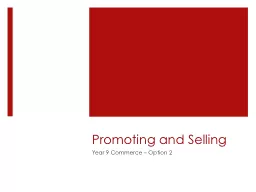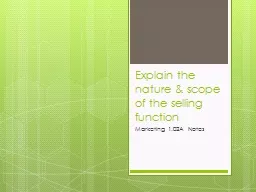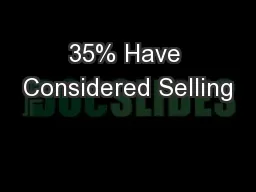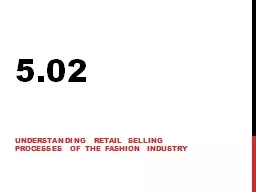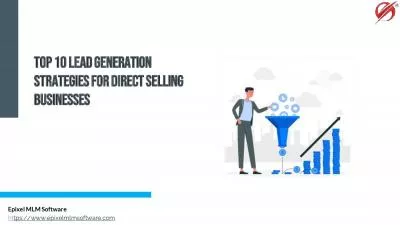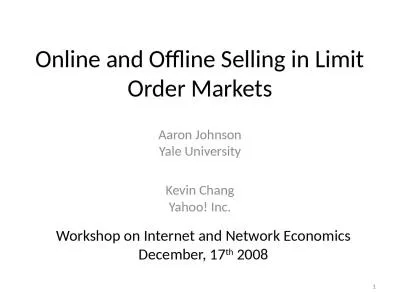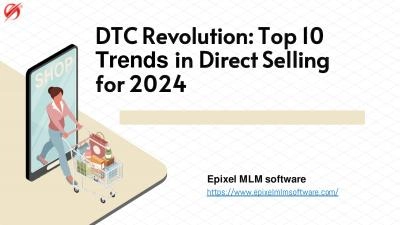PPT-Promoting and Selling
Author : test | Published Date : 2016-05-31
Year 9 Commerce Option 2 Students learn about The selling process Factors which differentiate products Service convenience value and social Environmental Product
Presentation Embed Code
Download Presentation
Download Presentation The PPT/PDF document "Promoting and Selling" is the property of its rightful owner. Permission is granted to download and print the materials on this website for personal, non-commercial use only, and to display it on your personal computer provided you do not modify the materials and that you retain all copyright notices contained in the materials. By downloading content from our website, you accept the terms of this agreement.
Promoting and Selling: Transcript
Download Rules Of Document
"Promoting and Selling"The content belongs to its owner. You may download and print it for personal use, without modification, and keep all copyright notices. By downloading, you agree to these terms.
Related Documents

